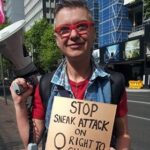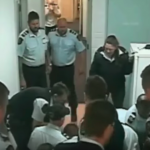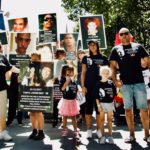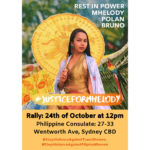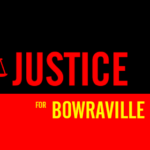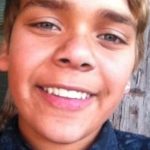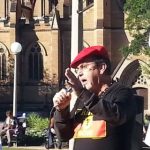Justice for Wayne Fella Morrison: An Interview with Caroline Andersen
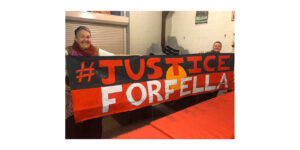
Descending from Wiradjuri, Caroline Andersen has resided on Kaurna land, Adelaide, for most of her life. And on 23 September 2016, she was waiting for her son Wayne “Fella” Morrison to appear at an Adelaide court.
The 29-year-old had been arrested the previous weekend and, despite it being his first arrest, he was taken to South Australia’s infamous Yatala Labour Prison.
However, just before the Wiradjuri, Kookatha, Wirangu man’s bail hearing was set to take place, a court clerk burst into the courtroom and handed the judge a note informing him that there had been an incident and Wayne would no longer be appearing.
Following a few frantic calls, Caroline and her daughters, Latoya Rule and Ella Morrison, turned up at the Royal Adelaide Hospital, “not knowing what to expect”.
Ms Andersen was then told that her son wasn’t at the hospital, although, in the meantime, Latoya overheard a conversation that suggested he was.
And after further questions about Wayne’s presence, security escorted them out to the carpark. So, while assuming Wayne was inside, Caroline, Latoya and Ella were made to wait in the parking lot for a number of hours, without being told anything – until the deputy corrections minister fronted up.
Excessive use of force
On the day he was due to be granted bail, twelve prison guards – along with a phalanx of others to back them up – wrestled Wayne to the floor of a prison corridor. Staff claim there had been an altercation in the remandee’s cell that led to the incident.
Caroline has always refused to watch the distressing footage that captures a group of guards placing Wayne in handcuffs, ankle cuffs and a spit hood. He’s still moving as he’s shoved face down into the back of a prison van and driven – whilst in the prone position – to the high-security wing of the gaol.
At the end of the three-minute drive, Wayne was pulled unresponsive from the back of the van. No cameras recorded what had happened inside the vehicle. But, one guard sitting in the front told the inquiry that “code black” had been muttered in the back.
No immediate attempt was made to resuscitate Wayne. Indeed, it took two and a half minutes before CPR was commenced.
And at 3.50 am on 26 September, the young First Nations man died in the custody of Corrective Services South Australia.
A travesty of justice
Caroline and her family have suffered through an unfinished two and a half month long coronial inquest, an inquiry by the SA government and another by the Ombudsman.
They’ve also sat through a Supreme Court case and an appeal of that decision. And they’re about to resume the coronial inquest with another stretch of proceedings in August.
This process has been so drawn out because the seven guards who transported Wayne in the prison van tried to be excused from testifying on the grounds that they might incriminate themselves, while 19 prison guards attempted to have SA deputy coroner Jayne Basheer thrown off the case.
Green Left and Sydney Criminal Lawyers spoke with Wiradjuri and Dharug woman Caroline Andersen about the deadly procedures applied to her son, the treatment her family received from corrections at the hospital, and her disbelief in the ability the guards have had in stalling proceedings.
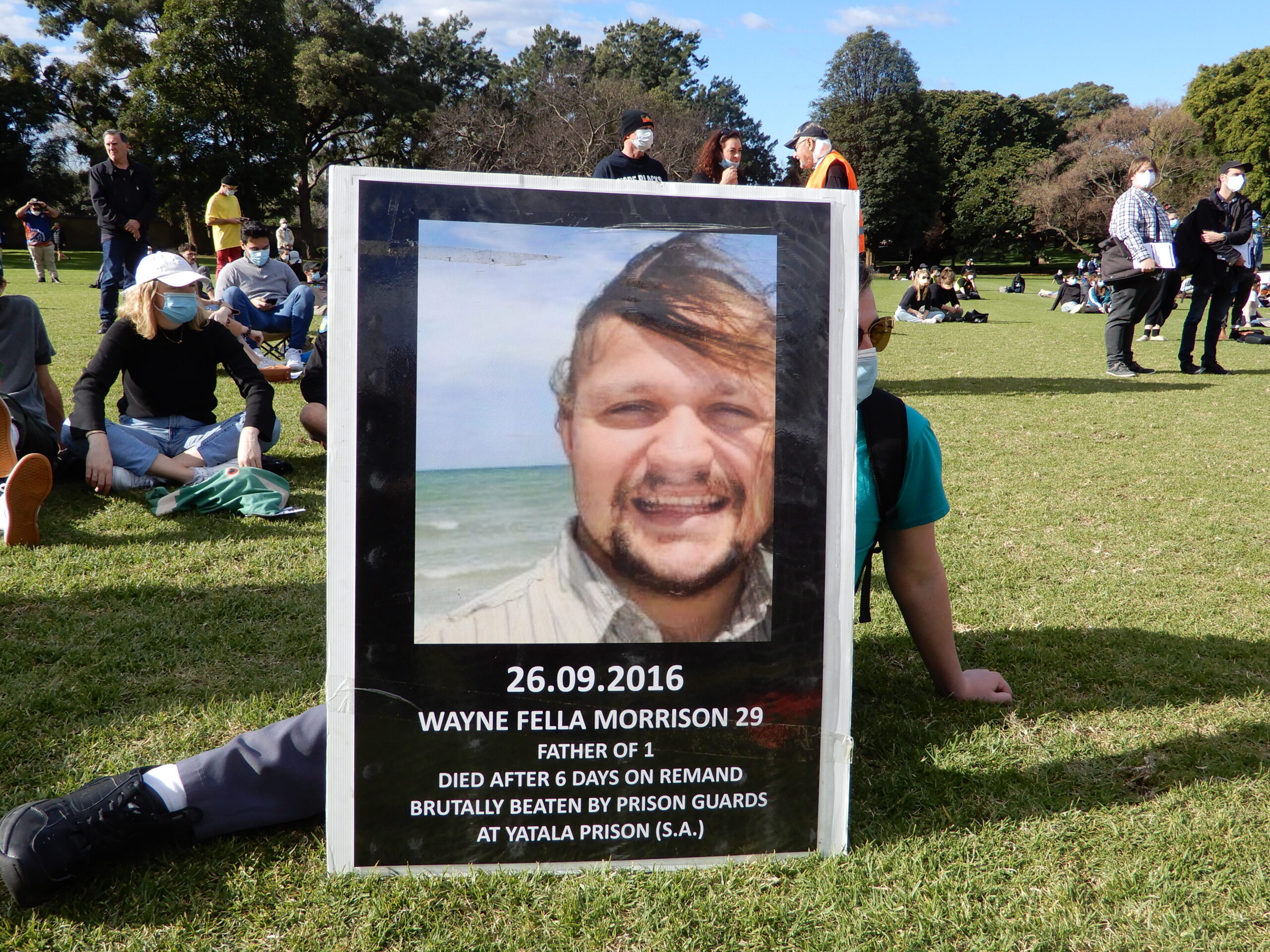
Firstly, Caroline, your son, Wayne Fella Morrison, died in the Royal Adelaide Hospital on 26 September 2016, three days after he was pulled unconscious from a prison transport van.
Around 12 officers were involved in restraining him, prior to placing him face down in the back of the vehicle. What do you think about the way your son was treated?
They treated him inhumanely, like he was a body with no personality. It was excessive force.
I still don’t know how come they couldn’t just handcuff him and walk him through the corridor to the next unit. It was just a three-minute drive.
Apparently, Wayne was taken from the police cells straight to Yatala Prison because there were no available beds in the remand centre. He was put on remand but sent there after his first time being arrested.
Yatala Labour Prison is the harshest prison in South Australia. It’s where murderers and rapists are sent – hardcore criminals. It is not a place for someone who has never been arrested before.
So, the van was called, and five officers put him in the back, while he was wearing a spit hood.
Yes. He was on his stomach, face down, with his ankles tied together and hands cuffed with his wrists behind his back. He was put in the prone position, and the same officers got into the back of the van with him.
While they were restraining him on the ground, a female officer said he was spitting and asked for a spit hood.
A male officer who was facing Wayne said it looked like he was just trying to clear his throat and blood and saliva was coming out of his mouth.
The spit hood was put on and the officer that was facing Wayne could see that it wasn’t put on correctly, but nothing was done about it.
Spit hoods are banned right across the world. In this country, South Australia is the only state or territory that’s still using them. And the reason they’re banned is they’re known to cause death.
That’s similar with the prone position. As you just mentioned, your son was placed in the prone position, which has been shown to cause death as well.
Exactly. It’s the same with the prone position. So, they did everything wrong.
The SA government is just about to release a new law stopping the use of spit hoods in youth prisons. And my daughter, Latoya, and some others have been pushing for spit hoods to be banned in prisons as well.
They put Wayne into the back of the van face down on his stomach. And then the officers got in with him: there was one officer at both of his shoulders and two on either side at the back.
When they opened the door at the other end, they realised he wasn’t moving. They pulled him out. They put him down on the ground. Someone turned him over. Then they took the spit hood off and that’s when they saw he was blue.
And they didn’t try to resuscitate him immediately?
No. When they pulled him out of the van, they didn’t start resuscitation straight away.
But a young man, who hadn’t been on the job very long, walked in and saw Wayne on the ground. And without even thinking, this kid dove in and started CPR. But, then one of the managers told him to stop and go get a defibrillator.
And from the time they pulled him from the van to the time the ambulance came, and they finally tried to get some response from him, it was over 50 minutes. I know that because a nurse stressed that to me.
The coronial inquest into Wayne’s death commenced in late 2018. There have been two and a half months of proceedings already. But the inquiry has since been postponed.
Yes. There are seven guards that haven’t taken the stand yet. They’re the main seven. They include the five guards that were in the back of the van with Wayne, as well as the driver and a passenger.
These seven guards tried to get an exception from giving a statement in the Coroners Court. They argued that they had the right not to testify because they would incriminate themselves. But, in actual fact, that isn’t the case.
What’s going to happen is the coroner and the lawyers will ask each question and it’s then up to the officer whether they answer each question. They have to give a reason as to why they don’t want to answer a question as well.
The inquest is about to commence again next month. Why has there been such a huge gap in proceedings?
It’s because the guards have taken the coroner to court. The lawyers first tried to use NSW laws to prevent the seven guards having to give statements.
Then, when the inquiry resumed, the lawyers for corrections claimed the coroner was biased, because she’d represented some parties that had been employed by the Yatala Prison years ago, when she was still a barrister.
So, they took her to the Supreme Court. And the judge said there was nothing to their arguments and the coroner would take the case.
After you’d been waiting in the hospital carpark for hours, you were taken inside, and a nurse told you for the first time what had actually happened to Wayne. What did she tell you?
She said that Wayne had been brought in unresponsive around lunchtime, and they had to put him on life support. She told me he hadn’t been breathing for 53 minutes, when they tried to resuscitate him.
I asked why they tried to resuscitate him after all that time. She said, “I don’t know, but I want you to remember your son has a really strong heart. Don’t forget that, he has a really strong heart. They’ve left him without breathing for 50-odd minutes. No one comes back from that. But he has.”
When we saw Wayne, we were only allowed to go in two at a time to see him, because he was still in custody. And the list of people who could see him, had to be approved by the minister of corrections.
When I went in, he looked like Wayne, but he was swollen. His whole body was bruised. There was evidence of restraint. Even the tops of his feet were bruised.
We weren’t allowed to take anything in with us whatsoever – no phones or anything. At any given time, there were between four and six corrections officers watching over him for the whole three days.
By 1 am on Monday morning, the hospital staff said they’d done everything they could, and it was time to let him go. So, they turned off everything.
We were only supposed to go in at two at a time still. I called the rest of the kids, because it was time to say goodbye. But, during that whole time, only two of us were allowed to go in, while the other two had to wait outside.
Even right up until his last breath, they were in control. They were still dictating what was happening in that space. I was completely disgusted that they could treat people like that.
The medical staff were disgusted as well. I had a nurse literally collapse in front of me sobbing, after her shift. She said that everyone felt so sorry for Wayne and the family. She said it should never have happened. And again, she told me that Wayne had a strong heart.
I realise now that hospital staff kept telling me that because in every other Aboriginal death in custody case, they always blame the victim.
It’s the prisoners’ fault it happened because they had a weak heart, or they committed suicide, or they’ve had a prior medical condition.
A lot of people have emphasised that after a death in custody it’s up to the family to speak out about it.
Exactly. The government doesn’t come in and tell you about the options of what you can do. They leave you.
We were lucky that Latoya had a lot to do with the Aboriginal Legal Rights Movement at the time, and they came in and were there right from the start. Cheryl Axleby stepped in and she guided us.
The government gave us no information whatsoever.
You’re about to return to the Coroners Court two years after the coronial inquiry was first underway. How do you feel about the way the system is working here?
Well, this is what gets me, in what world do we live in where a group of corrections officers have the ability and are under the belief that they have every right to hold the state to ransom?
Why are these officers allowed to do that? They were allowed to take them to court and hold them to ransom. That’s what shocks me: how these people have been allowed to do this. They’ve stopped the coroner from doing her job twice.
The coronial inquiry was only supposed to take three or four weeks. It could have finished two years ago. And now we’re going into the fourth year since Wayne’s death, and the third sitting of the coronial inquiry.
The other thing is, that these guards believe its okay for them not to take the stand or take the stand and not say anything. They were with Wayne for the last few minutes of him being alive. They were near him.
Surely, something must have happened in the back of that van. Did anyone hear anything? Did anyone see anything? What was the conversation in the back of the van?
Something happened. And everyone has given them the privilege of doing as they please and let them believe they’re above the law.
And lastly, Caroline, over the last month and a half, there has been a huge resurgence in the movement to end Aboriginal deaths in custody. This has been sparked by the Black Lives Matter movement in the States.
Having dealt with all of this for close to four years now, what do you hope comes out of the campaigning that’s happening at present?
Change. Real systemic change. Not only for myself, but for all families. We need the government to stop and listen to what we have to say and put in the changes that people are recommending need to happen.
South Australia just passed a bill to put the Custody Notification Service in, so that when any Indigenous person gets arrested, it’s now the law that police have to notify the Aboriginal Legal Rights Movement.
That was one of the recommendations of the Royal Commission. And that’s systemic change.
We need to refresh and rehash all the recommendations that were handed down. Some of them might not apply today, because times have changed.
But there might be new ones that need to come into play, like the banning of spit hoods. For my son, that was an element in his death.


